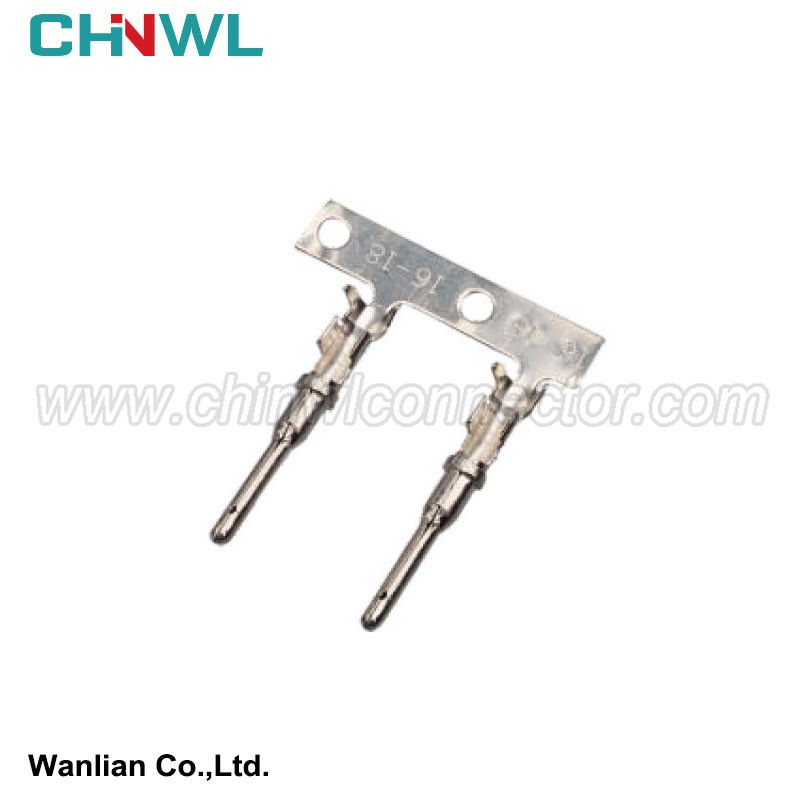

|
Wanlian part number: |
|
|
|
Original number: |
|
DJ212-1.6 |
|
Gender: |
|
Male |
|
Specification: |
|
Copper Alloy, Brass, Phosphor Bronze, Nickel. |
|
Type: |
|
Terminal |
|
TUV, TS16949, ISO14001, ISO 9001, RoHS conform: |
|
Yes |
|
MOQ: |
|
No minimum order quantity |
|
Supply sample: |
|
Yes |
|
Customized drawing with Decal, Frosted, Print are available as request |
|
Yes |
|
Payment method: |
|
We accept Paypal, TT, Alipay, West Union etc. |
|
Transportation method: |
|
Air Transport: UPS, DHL, FEDEX etc; Sea Transport; Railway Transport; Freight Forwarding etc. |
|
Production Capacity: |
|
1000000pieces/Month |

Load current calculation formula
The rated current of the load: I=P/U,
In the formula, I is the rated current, unit: A, P is the rated power of the load, unit: W, U is the rated voltage of the load, unit: V
The load resistance remains unchanged, R=U/I=U1/I1,
In the formula, U1 is the actual working voltage of the load, unit: V, I1 is the actual working current of the load, unit: A
Combining the above formulas with derivation,
R=U/I=U·U/P=U1/I1, then:
I1=(U1·P)/(U·U)
Fuse Capacity Selection
There are many formulas for selecting the fuse capacity. For example, you can check this article (the calculation method of the fuse capacity is complete). Using different formulas, the final results are basically the same (different occurrences are not ruled out). But no matter what the result is, the result of the selection cannot be separated from the two conditions of fuse selection mentioned above. In order to make it easier for everyone to calculate, here is only one formula that is often used by individuals, which is convenient for everyone to choose.
For the theoretical calculation and analysis of fuses, you can check the relevant technical documents of Littelfuse fuses by yourself, and you can directly obtain them directly on my official account: wiring harness engineer, and reply to the keyword "fuse".
Recommended calculation formula (commonly used loosely)
Fuse capacity (F) ≥ load operating current / (load characteristics * peak current time * load assembly area * fuse matching area)
If≥I1/(αβδ)
In the formula:
If is the rated capacity of the fuse, unit A;
α is the load characteristic coefficient, the value is 0.8 if the load working time is over 10s, otherwise it is 1.1;
β is the peak current coefficient, the peak current is less than 0.3s, the value is 1, otherwise the value is 0.7.;
δ is the temperature coefficient, δ= load assembly area coefficient * fuse assembly area coefficient, if the load is arranged indoors, the load assembly area coefficient is 1, otherwise it is 0.9, the fuse is assembled in the fuse box, then the fuse assembly area coefficient is 0.9, otherwise ( If a single fuse holder is set separately) is 1.
For example, if the load current of the speaker is 8A, the capacity of the fuse should be If≥8/(1.1*0.7*0.9*0.9)=13A, so the capacity of the speaker fuse should be 15A.
Simple instructions:
We have product Catalogue,please contact us on skype,WhatsApp or Email.
If you can't find a product on our website or catalog, We deal with over 10,000 items, our catalog doesn’t cover all products. And we are developing 100+ molds yearly, which means around 10 new products are created in our factory. So don’t go away, just send us your photo or part no, we’ll check for you.